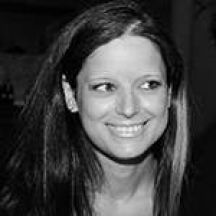My artistic goal is to create photographic images that compassionately render the human experience, revealed through the lives of individuals in the lesbian/gay and/or persons of color communities.
Ever since its invention back in the 19th century, photography has been documenting life. At the same time, it focuses on inviting audiences to a rather subjective world, while trying to be taken seriously as an art form. Photography has always been considered a male-dominated profession, but luckily things are changing. Scholars, writers, bloggers, photography students and enthusiasts have been giving due to the female pioneers of the field. Most of them were always standing and/or hiding in the shadows, oblivious to how much they could acclaim and accomplish. Arguably, the technique, concepts and thematic female photographers use differ from those of a male photographers. At a time when most women were convinced that their place was in the kitchen and certainly not in the dark room, there were those who were struggling to surpass their male counterparts and work towards gaining respect and recognition for their work.

Laura Aguilar (American photographer, 1959-2018) was born in California, but both her parents were of Mexican descent. As a child, she suffered both from bouts of depression and of dyslexia. Aguilar herself attributed her interest and start in photography to her brother - and their rivalry - who showed her how to develop in dark rooms. Unlike her brother, who eventually moved on to other interests, Aguilar kept her passion for the medium. Words were never her strong suit, but the camera became Laura's outlet and her unflagging passion, a way to communicate when words often failed her. She attended Schurr High School in Montebello, California. In 1987, during a high school photography class, she met Gil Cuadros, a Mexican-American poet who was diagnosed with AIDS. Cuadros would accompany Aguilar to Downtown Los Angeles for pictures. She was mostly self-taught, although she took some photography courses at East Los Angeles College, where her second solo exhibition, Laura Aguilar: Show and Tell, was held. She also studied at East Los Angeles Community College for a time and participated in The Friends of Photography Workshop and Santa Fe Photographic Workshop. She was well-known for her portraits, mostly of herself, and also focused on people in marginalized communities, including LGBT and Latino subjects, self-love, and the social stigma of obesity. Aguilar was active as a photographer beginning in the 1980s and worked primarily in the genre of portraiture. Her work centered on the human form and challenged contemporary social constructs of beauty, focusing on Latina lesbians, black people, and large people. According to critics, she often used self-portraiture to come to terms with her own body as she challenged societal norms of sexuality, class, gender, and race. In her series Stillness (1996-99), Motion (1999), and Center (2001), she - according to critics - fused portraiture with the genres of landscape and still life. Laura's works have appeared in more than 50 national and international exhibitions. She was a 2000 recipient of an Anonymous Was A Woman Award and the James D. Phelan Award in photography in 1995. She had her first retrospective at the Vincent Price Art Museum at East Los Angeles College as part of the Pacific Standard Time LA/LA series of exhibitions in 2017-18. The exhibition also made stops in Miami, at the Frost Art Museum, and at the National Museum of Mexican Art in Chicago. It opened at the Leslie-Lohman Museum of Art in New York in the spring of 2021. Aguilar died of complications from diabetes in a Long Beach nursing home at the age of 58. Her work is held in a number of public collections, including those at the Kinsey Institute for Research in Sex, Gender, and Reproduction, Indiana University, Bloomington; Los Angeles County Museum of Art; Museum of Contemporary Art, Los Angeles; Whitney Museum of American Art, New York City; and the New Museum of Contemporary Art, New York City. Critics and scholars closely identify Aguilar's work with Chicana feminism; one writer observes that "Aguilar consciously moves away from the societally normative images of Chicana female bodies and disassociates them from male-centered nostalgia or idealizations". Her more recent self-portraits navigate her personal intersection of identities as Latina, lesbian, dyslexic, and overweight. Her best-known series is often considered to be Latina Lesbians, (1986-89) which she started in order to help show a positive image of Latina lesbians for a mental health conference. Other popular works include Clothed/Unclothed (1990-94), Plush Pony (1992), and Grounded (2006-07), with the latter being her first body of work done in color. Reviewer A. M. Rousseau notes: "[Aguilar] makes public what is most private. Through this risky act, she transgresses familiar images of representation of the human body and replaces stereotypes with images of self-definition. She reclaims her body for herself".


She was both the subject and the object. She was both the photographer and the mood.
We will continue talking about female names that left their mark on photography and about contemporary female photographers who are still to emerge. There are a lot of female photographers out there deserving of praise and we can only hope to cover as many of them as we can. Please, follow this space to find out more.







